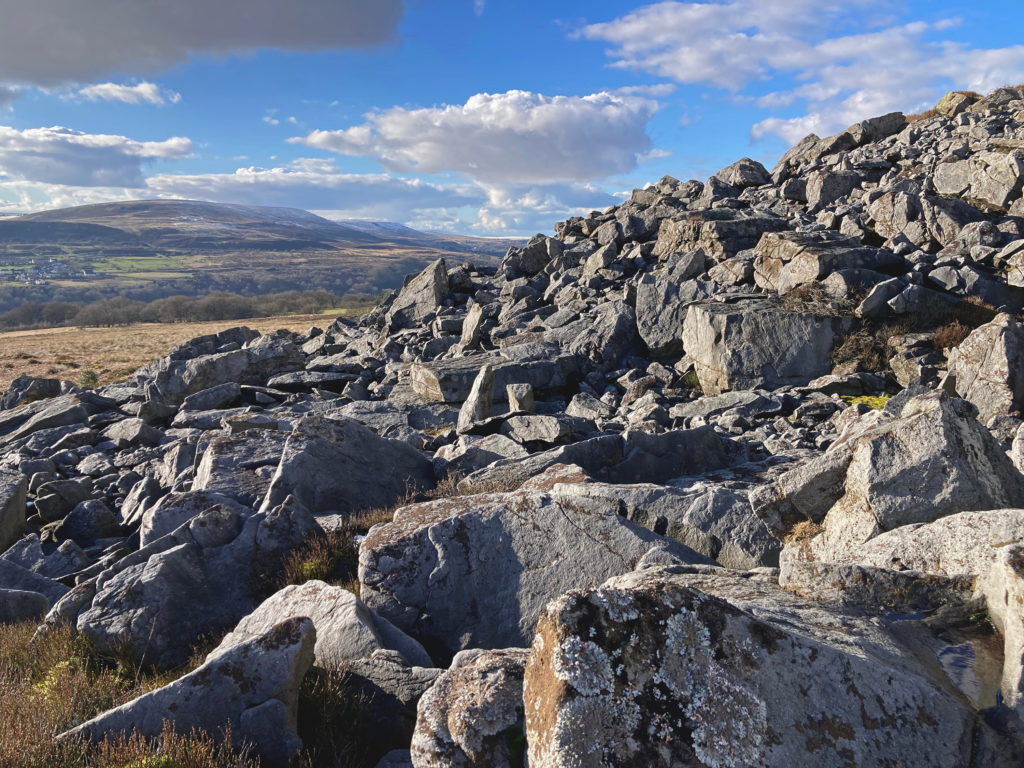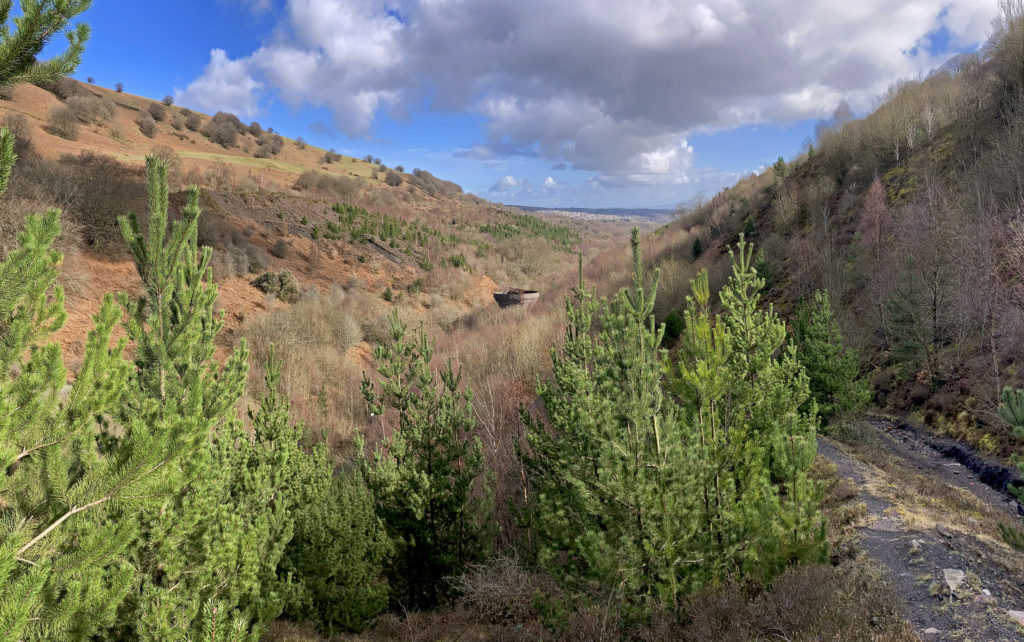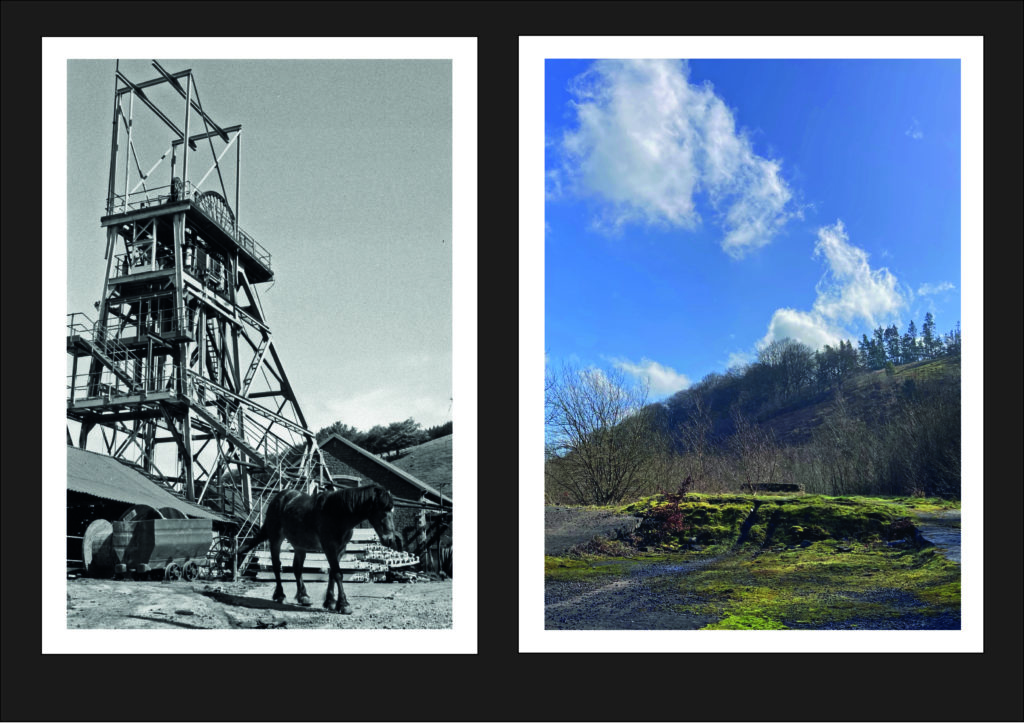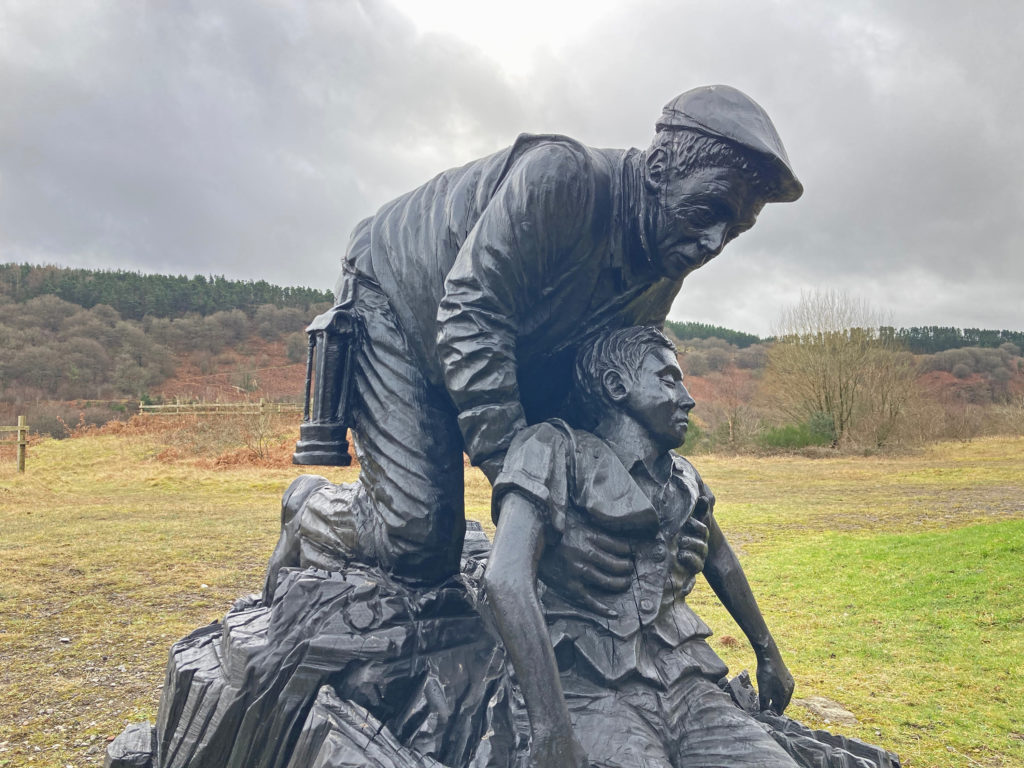Y Filltir Sgwâr/The Square Mile: The Price of Coal

In a year long series Tom Maloney, from Abersychan, shows how you can love a place so well it becomes a part of you.
As I took the photo of Mike Smith standing by the castle rock of his childhood years for my last feature ‘Serendipity’ my gaze was also taken to Mynydd Garnclochy in the distance.
Locally it is better known as ‘The Devil’s Heap of Stones’, it is an amazing place with such a story and I thought it would make a lovely next feature.

Over the week I have walked there twice, but all the while I found my thoughts being drawn elsewhere, so I will leave this one for a week or two.
In our conversation, Mike had talked about his father being a miner at Blaenserchan Pit and of living in a collier’s cottage.
Then, one morning this week I heard an ex miner talking on the radio about his memories of the 1984 Strike and about how much things have changed.
He talked passionately about the community of work that could be found in the mines, about how people knew each other more in their daily lives and that people worked in different places now, often as far away as Bristol.
I thought he was right and his words took my mind back in time.
When I look back to my teenage years it was still something really special to get an apprenticeship with the Coal Board, it was a goal that some of my friends in school were rightly proud to achieve.

Even though I did not make this choice myself because my passion was to go to art school, I still felt a family connection with mining because my grandfather had worked as a haulier at Tirpentwys Colliery, Pontypool.
It’s still something that is important to me now. I have his old, brass lamp, engraved with the name that I share with him.
It is dented and bruised through many years of wear and though I never actually got to know him, when I touch the lamp and feel its history I think I get to I know him in a little way.

Perhaps because of my grandfather or perhaps because I have always been drawn to industrial landscapes I took a number of black and white images of Big Pit and Blaenserchan Colliery in the 1980s whilst I was an art student.
I remember the dark, desolate landscape of Big Pit back then and how sheep grazed freely around the colliery site.
It had just become a mining museum where visitors could go underground for the first time and where miners were now tour guides.
I wanted to create a panorama inspired by David Hockney’s Polaroid compositions, where a series of images joined together to tell a story.
This story re-emerged several years ago on a little voyage of discovery looking through my file of old negatives and several of these compositions are now on display at Big Pit.
The site was fascinating then and it remains fascinating now as one of our finest national museums.

Blaenserchan Colliery is one of my favourite places to walk today.
Over the years Nature has done so much to heal the valley and in some places you can easily imagine yourself to be standing in a highland setting when you are actually standing on colliery spoil!

The Pithead is so different now. I visited the site several times when the winding gear was still in operation.
These giant, metal structures were so impressive, such iconic, distinctive features of each valley and each pit.
I cannot be sure if coal was still being brought up at the time, but you could hear the smooth, whirring noise of the winding wheels in motion.
Though I was just a casual visitor, the miners I met were so welcoming and I felt very comfortable in their company. They seemed to be pleased that someone was taking an interest in their mine.
On one occasion I saw a beautiful, gentle pony that I think was called ‘Welsh’, enjoying the fresh air as it roamed about the surface, a reminder that animals were miners too.

Along the curve at the top of the valley lie the ruins of the pithead baths and first aid room. Oh how it would be if these jagged, jumbled ruins could talk.
Broken white tiles and mounds of cadmium red bricks emblazoned with Abersychan Brick Company fill my imagination with the banter of the miners at the end of the shift, their singing and perhaps their talk of the next big rugby game at Pontypool Park.

But this valley also had another pit, at one time called Cwm Nant Ddu Colliery, but better known as Llanerch.
One hundred and seventy six men and boys, as young as twelve, lost their lives here in a huge underground explosion on the 6th February 1890.
In recent years a fitting memorial has been placed where the colliery once stood.
The memorial carved by the sculptor Chris Woods is such an evocative and moving piece of artwork and I am always reminded of the words I heard on a visit to Six Bells, Abertillery.
“Back in the day you never argued about the price of fish or the price of coal because it was too hard won.”
Thinking about the fortieth anniversary of the Miners’ Strike called on the 12th March 1984, I think that history is still counting the price of coal.
Read the earlier installments of Y Filltir Sgwâr/The Square Mile by Tom Maloney
Support our Nation today
For the price of a cup of coffee a month you can help us create an independent, not-for-profit, national news service for the people of Wales, by the people of Wales.







